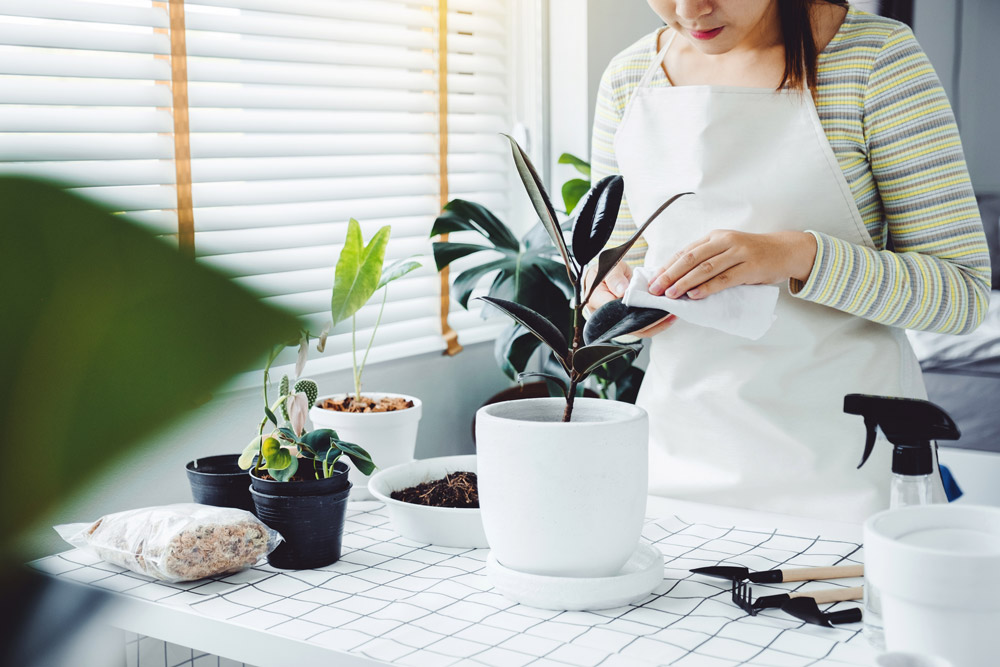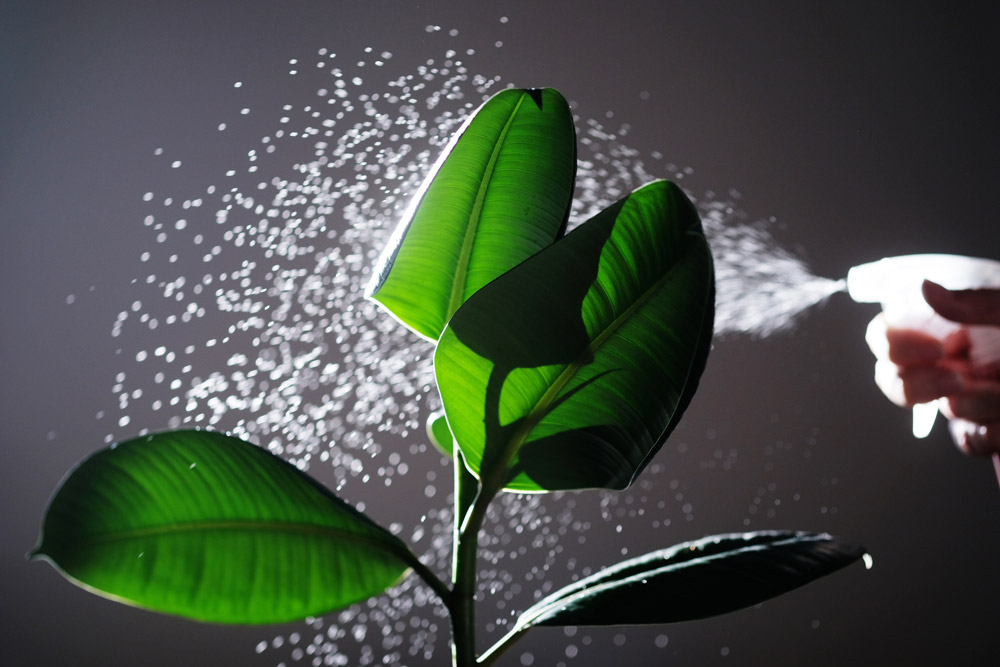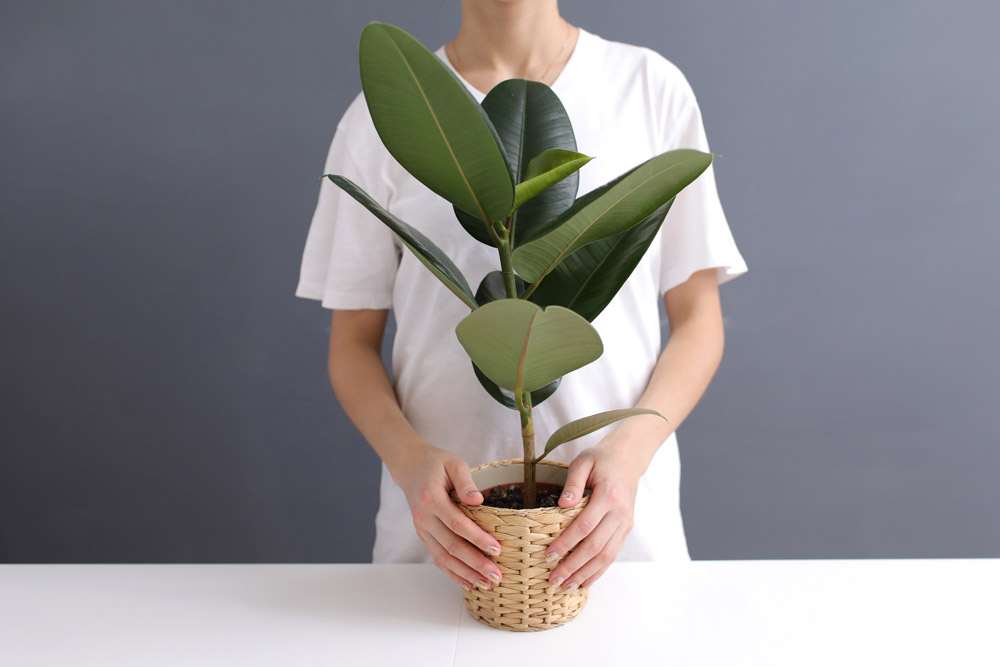Types of Rubber Plants – How to Care For Rubber Tree Varieties
For many years, the Rubber plant, also known as Ficus elastica, has been making it to the top chart list of hardy and fit as a fiddle houseplants across many gardening stores. The Ficus elastica is quite a glossy and resilient houseplant that naturally has the potential to grow up to 8″ inches, or even more.
Most Rubber plants are usually variegated so you have a couple of options to choose from. What will make you so obsessed over the Ficus elastica, to be precise, is its aptitude to handle neglect and stay indoors for decades.
Its path to longevity is quite impressive. All you need to maintain its graceful appeal is to make sure that it gets all the definite growing conditions it needs to survive even during the tough months.
Types of rubber plants
The Rubber plant has enjoyed some degree of stardom for over 30 years and counting. It endures so much strain and abandonment much longer than most other houseplants. All Rubber plant varieties belong to the Moraceae family. And the Fiscus Elastica is arguably the most popular among them all since its foliage remains green and doesn’t fall out any bit no matter the season.
[amazon box=”B08PG5M16Y”]
The leaves of this plant emerge from a colorful capsule which most new gardeners tend to confuse for flowers. Just to clarify the bland assumption, the Ficus elastica isn’t a flowering plant. Tracing its native roots from the tropical parts of India and eastern Asia, this houseplant prefers moderately humid conditions and carries staggering prospects to reach up to 100″ feet tall. And that’s why most homeowners place the growing medium somewhere in the corner of their balcony or walkway because space is a concrete factor to consider if you’re looking to grow and keep this houseplant for years.
After some careful research, Dr. Wolverton, an environmental expert, ranked this variety among the most effective plants for purifying the air in your home or office. Rubber plants always have an unswerving grit to grow upwards without any reservations. But if you don’t want it to eat up all the space you’ve set aside for your collection of houseplants, you might want to do some regular pruning.
Rubber Plant Varieties
As you’re probably aware, there’s quite a large catalog of varieties to choose from.
[amazon box=”B00OALMPH6″]
Most of these varieties are variegated and often come in shades of cream-yellow, or green and white. But even with plenty of options at your disposal, narrowing down to the most breathtaking and awe-inspiring ones would make perfect sense. So you might want to look out for these other variegated types before settling your mind on the one which you feel is the most visually pleasing:
- Ficus Ruby-It features oval-shaped leaves that are dark-green with strawberry-cream lining on the edges. The Ficus Ruby is typically grown indoors and can reach up to 6″ feet tall when it matures.
- Ficus benghalensis-This variety is also popularly known as the Ficus Audrey. The leaves of this tree from India are usually made of a skinny layer with fine lines that make an adorable pattern. Most households adopt this variety for its drought resistance and frost-proof mileage.
- Decora-Decora, also known as the Red Rubber, is a variegated variety that looks stunning in floor-standing containers and has slightly smaller leaves than those of the Ficus elastica.
- Benjamina ficus- This tropical tree is also dubbed the ‘weeping fig‘ since it’s overly sensitive to alterations in light and moisture. Changes in these conditions cause this variety to shed frequently. It has dense-green leaves that are ever glossy and can grow up to 3-6 feet when grown indoors. If you’re looking to grow it outdoors, the Benjamina ficus can reach up to 60″ feet tall.
Rubber Plant Care Tips
Light & Temperature
Rubber plants prefer bright-indirect light all year round. Just make sure the position you’re placing the growing medium is well-lit but blocked from the direct UV rays. So if you’re planning to grow your Ficus elastica close to a window, make sure to filter the rays using sheer curtains.
Most evergreen varieties will keep up with dull areas but not for too long. Lack of enough light makes your plant grow thin and pale. If the lower leaves begin to fall off, that’s an early sign to indicate that your Rubber plant desperately needs more light. Another sign to keep an eye on is when the leaves lose their glossy look.
Your Rubber plant will exhibit optimal results if grown under temperatures between 10-29°C. Higher temperatures tend to make the leaves become less turgid. Over time, they’ll begin to wilt and lose their pattern which you’ll ultimately depend on to create an aesthetic feeling in your living space.
During winter, you want to keep the room temperatures above 12°C. Extreme changes in temperature will ruin the well-being of your Ficus elastica, so you want to keep it far from very hot or cold air— especially that which comes from heat/AC vents.
Watering
Rubber plants die when you overwater them mostly during winter when the temperatures are freezing. Even though this plant has the zeal to withstand neglect, you will need to keep the soil evenly moist especially during the warmer months. But at the same time, you ought to be conscious of the fact that too much water is a major threat to your plant’s health.
The roots might begin to rot due to overwatering. Leaves also tend to droop, so you want to wait for the first few inches of the topsoil to dry out before watering your Ficus elastica again. I would preferably go with the soak and dry method if I’m looking to grow any Rubber plant variety to give it some drying grace period. It’s ideal to water this plant only once per week.
Fertilizer
To boost the appearance and rate at which your Rubber plant sprouts, you might need to use fertilizer during the growing seasons. Rubber plants need well-balanced fertilizer every summer and winter so they can keep on looking graceful and radiant. Your Ficus elastica needs to make some chlorophyll so it can maintain its evergreen look.
It also needs a robust rooting system and immunity from dreadful diseases. To achieve all these demands, you’ll need to look out for fertilizer that’s made of all the essential macronutrients. And that’s to say you need to use a fertilizer that has potassium, phosphorus, and nitrogen in the equation.
Soil & Transplanting
For this plant to develop into a well-knit and hulking tree, you want to use a peat-moss based potting mix and amend it with some sand to make the soil structure a bit more porous. You also need to do some topdressing during spring or summer to replenish the soil with newer organic nutrients.
This also helps introduce beneficial microbes that boost your plant’s growth hormones and control any possible damage caused by pests or diseases.
Repotting your Rubber plant will highly likely be necessary down the road since this plant has the wild potential to outgrow its initial medium. If you’re growing it indoors, pick a fairly bigger pot that won’t let the roots come out of the drainage holes. The best season to carry out this exercise is anytime during spring. Since clay pots are porous, unlike plastic ones, you’ll need to give your plant frequent watering sessions.
When removing the plant from its first pot there’s a good chance you’ll face some struggles. This is especially the case if the roots are tied up between the drainage holes. So you want to be careful not to damage the roots since they significantly help with the plant’s overall development. If your Ficus elastica is pot bound, then its speed of growth will diminish over time.
Pruning
Rubber plants grow moderately fast. If the space you’ve set aside for this houseplant is a bit limited, you might want to cap its growth rate. And one way to do manage your plant’s height is by trimming the top-most branches. How tall your plant grows will depend on the extent of care you give it. Growing this houseplant in a bigger pot will give it space to burgeon beyond 9″ feet.
Toxicity
So is the Rubber plant poisonous? Sadly, yes it is. But the toxicity levels are usually mild. Most Rubber plants, including the Ficus elastica, ooze out a milky sap that causes skin irritation or gastrointestinal issues when ingested. You want to use protective gear when pruning or propagating your Ficus elastica to keep such health risks from happening.
Common Pests & Diseases
There are times when your Rubber plant will fall sick, but these occasions can be rare if you’re continuously taking some bold measures to keep it in good health. If you see any signs of the leaves becoming droopy, this simply means that your plant is thirsty and needs frequent watering sessions.
You might also spot a few dark spots on the leaves. And one of the major causes for that would be lack of enough light or too much cold during winter. Any white spots on the underside of the leaves would indicate that your Ficus elastica is suffering from an attack by mealybugs. Other common pests you’ll deal with infrequently are spider mites and scale bugs.
How to Propagate Your Rubber Plant
Using stem cuttings is the most fruitful way to propagate your Ficus elastica. And you want to wait till spring clocks in since that’s when the growth hormones are full of energy and the conditions are quite conducive as well.
To get started, you just need to follow these five easy steps and you’ll be good to go:
- Cut a few stems and makes sure they’re at least 3-5 inches long.
- Use rooting hormone to help the cuttings develop faster.
[amazon box=”B00AA8WPGY”] - Wait for the sap oozing from the fresh wound to dry out completely.
- Plant the stem using the soil composition we suggested earlier in this guide.
- Keep the growing media gently moist and place it somewhere with indirect light access.


